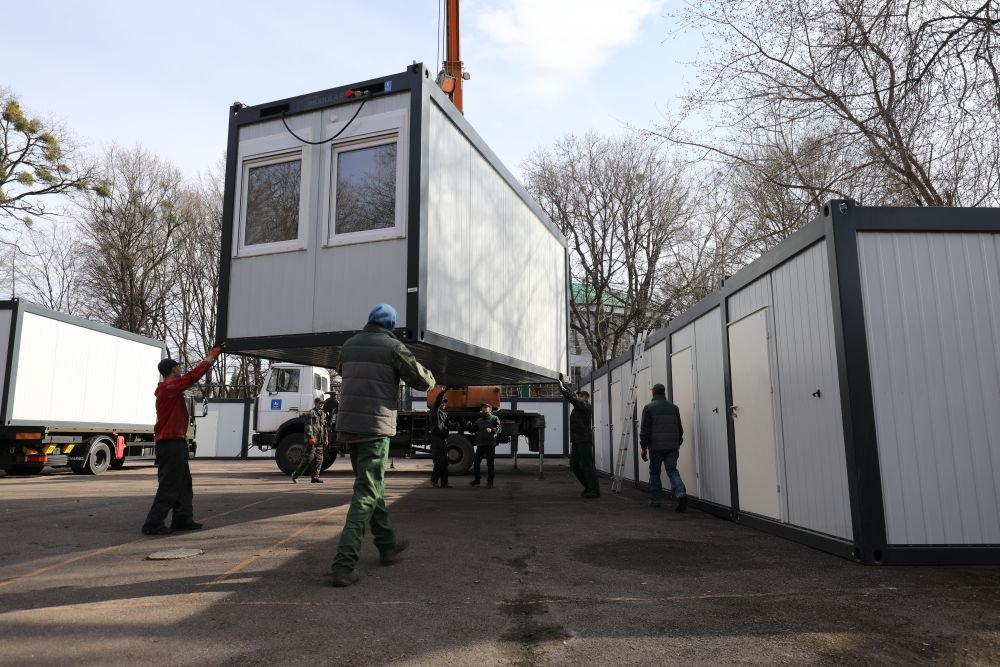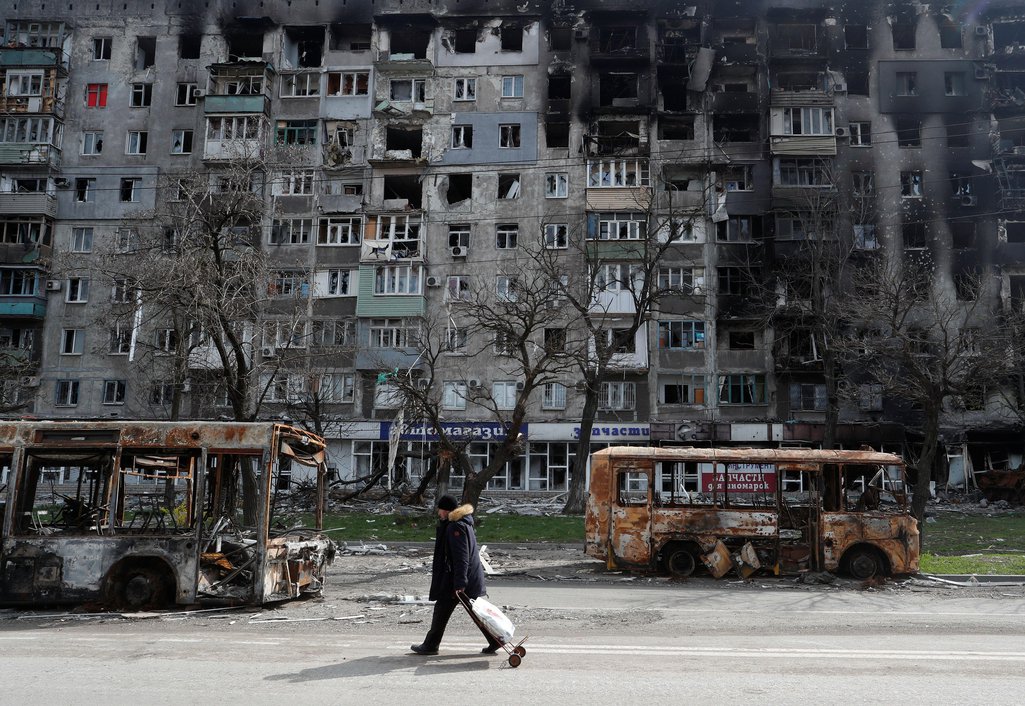This text was originally published at openDemocracy.
“The apartment is fine. We took some food from the fridge and watered your plants,” my friends texted me a fortnight ago.
For almost two months, I’ve been unable to return to the apartment I rent in Kyiv. Just before the war began, I had left for a vacation that unexpectedly ended in me seeking temporary refuge in a foreign country. Yet my home is somehow undamaged, giving me hope of returning soon and seeing the Ukrainian capital’s iconic chestnut trees in blossom.
While the building I lived in has so far survived the Russian invasion, thousands of others have been devastated. By the beginning of April, almost 7,000 residential buildings were reported to have been destroyed or damaged. The full scale of the destruction is still unknown, as cities like Mariupol are not yet free from occupying Russian forces.
Approximately 11 million people have been forced to flee their homes since Russia launched its invasion in February. Almost seven million of those have moved to other regions inside the country.
There is one burning question for the internally displaced: where to find housing?
Emergency shelter
At first, Ukrainian local authorities focused on providing emergency shelter. They desperately sought empty buildings – such as gyms, schools, kindergartens and sanatoriums – and transformed them into sleeping areas. In several regions, local governments and NGOs started to repurpose university dormitories. Ukraine’s State Property Fund announced its assets would be used to house displaced people.
But this was not enough. By 7 March, the western Ukrainian city of Lviv alone was hosting at least 200,000 people, leading the mayor to claim it had reached its limit and ask international organisations for help.
Two months since the Russian invasion began, discussions are now turning to longer-term housing solutions. In Lviv, construction of temporary modular housing, using shipping containers, has started. The city’s authorities have also announced that they are ready to buy empty apartments from development companies.
On a national level, the deputy head of the President’s Office claimed in a recent interview that the Ukrainian government would soon buy new-build apartments, which had not been sold before the war, to house displaced people. Another possible option being called for by housing researchers is using vacant properties to temporarily house displaced people, under the provisions of Ukraine’s martial law. But this is not yet being considered.

Meanwhile, Ukraine’s rental market has boomed – with exorbitant prices. The Bureau for Economic Security of Ukraine, a state body that investigates economic crimes, reported that most of the complaints it received from the western Zakarpattia region in the first month of the war were about inflated rental costs.
Landlords can legally increase rental prices as they wish. Faced with rising rents, the local governments can only condemn landlords publicly and appeal to their morality. Some mayors, however, have threatened to temporarily expropriate these landlords’ property and use it for housing evacuees. Unfortunately, though this is theoretically possible under martial law, such threats have not materialised.
Nor has war not stopped people being evicted from their apartments. On Facebook, reports surfaced of one man returning to Kyiv after evacuating, to find his locks had been changed. His landlord reportedly demanded two months’ rent in advance to give him the new keys.
The Ukrainian Civil Code and constitution protect people from non-court-order evictions. However, as housing researcher and activist Aliona Lyasheva highlighted, there is a power imbalance between tenants and landlords when it comes to evictions. This means it is harder to exercise the right to housing than the right to private property, especially in the current climate.
‘We just have to build more’
Russia’s war has undoubtedly provoked an unprecedented housing crisis. But it has also revealed the existing frailties in Ukrainian housing policy that contributed to the scale of the current problem.
After the collapse of the Soviet Union, housing privatisation became a way to soften the ensuing economic shock to Ukrainian society. This process transferred immense housing stock from the state into private hands, leading to Ukraine developing one of the highest (more than 90% in 2009-10) owner-occupancy rates in Europe.
Over the past 30 years, Ukrainian housing policy has continued to favour private ownership. State programmes have co-financed home purchasing, and tax incentives have made housing a safe investment asset. Property development companies became significant stakeholders in Ukraine’s public housing policy, strongly backing the unofficial motto of national and local officials: “We just have to build more.”
These priorities led to several problems.
First, the state-owned housing stock became scant. Although the term ‘social’ housing exists in Ukrainian legislation, the sector has been constantly underfunded – with just 1% of people living in state-owned homes in 2018. In Kyiv, there were only 72 social housing apartments at the end of 2021, according to city officials. This meant Ukraine was not prepared for the current tide of displaced people, nor for the mass displacement in 2014, when millions of people fled Crimea, Donetsk and Luhansk.

Secondly, the quality of housing stock has deteriorated. For many people, owning a home did not mean they had the funds to maintain it. According to research by Cedos think tank in 2019, almost half of Ukrainian families spent 20 to 40% of their income on utilities. And while buildings constructed during the Soviet era were in urgent need of reconstruction, neither homeowners nor the central government had sufficient resources to carry out refurbishment works.
Finally, Ukrainian policymakers have mostly ignored the private rental sector. Before the war, at least 8% of people rented an apartment in big Ukrainian cities. Private landlords controlled the rental market, and the state did little to introduce any regulations to protect tenants.
Future change
When the war ends, the housing sector in Ukraine will require change. We will need policies to reflect and guide those transformations.
The tenure structure might be different. The percentage of private renters is likely to increase, and decision-makers will no longer be able to ignore the rental sector. The first step would be to ban evictions during martial law. Such a ban could be difficult to implement, but could provide additional pressure on landlords to obey the law. The introduction of rent control mechanisms, such as a rent freeze, would make speculation over rental prices not only unjust, but illegal.
There are also questions regarding the rebuilding of damaged housing stock. How will it be done? Who will finance the process? The Ukrainian government has already started to gather information about destroyed property through the Ukrainian online state services application, Diia. As of 14 April, there were over 76,000 requests for help over destroyed property. Parliamentarians have drafted a law for a compensation procedure. For now, the plan is to rebuild everything and reestablish private ownership.
Irrespective of this, Ukraine needs to expand its state-owned housing stock. One possible way to do this is to reconstruct at least some percentage of residential buildings as state-owned housing. This might prove to be a more resilient housing policy in the long term – equipping Ukraine with accommodation that could be used during another war or natural disaster – and finally transfer the costly burden of maintaining buildings from the public to the state.
Support Cedos
During the war in Ukraine, we collect and analyse data on its impact on Ukrainian society, especially housing, education, social protection, and migration










